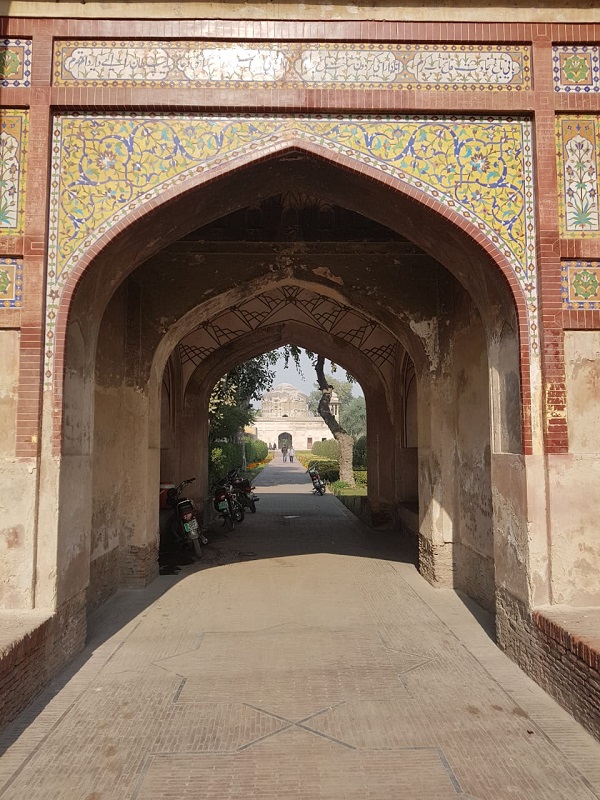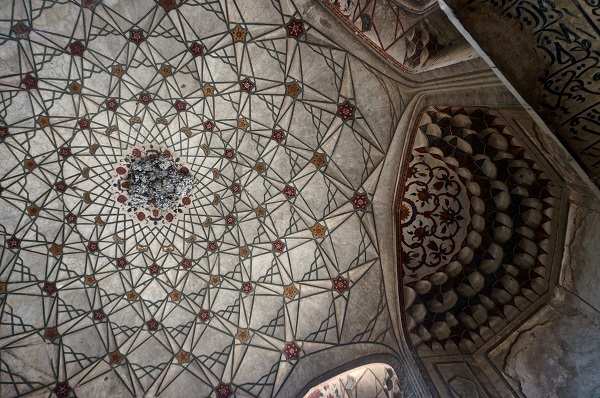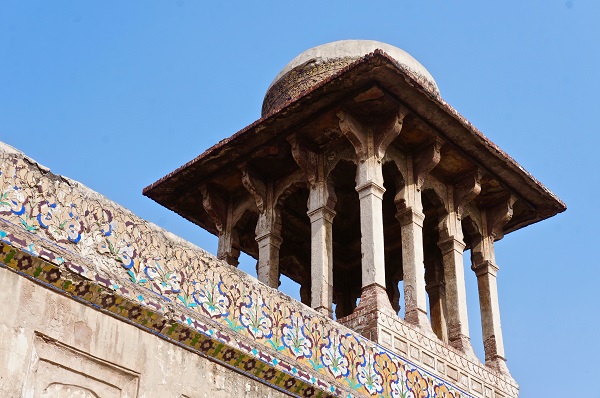Written by: Muhammad Asif Nawaz
Posted on: June 09, 2020 |  | 中文
| 中文
Dai Anga's Tomb
The grand monuments of Mughal Lahore are among the reasons that the city continues to enchant so many. However, it’s not just the relics of the Emperors’ grandeur that make Lahore what it is. Various other characters closely associated with the Empire, some more dimly remembered than others, have also left marks on the city that are meant to be explored and uncovered. One of them is Dai Anga (the term ‘Anga’ is used in Mughal history for women who nursed children of the royal family), known most commonly as the wet-nurse of the Mughal Emperor Shah Jahan, but her story goes much deeper than this occupation.
Her real name was Zeb-un-Nisa, and her family served the Mughal Empire for years. Her husband and brother were important and trusted administrators of the emperor, and her son was allegedly Dara Shikoh’s best archer. Not one, but two monuments in Lahore stand today as a reminder of Dai Anga and of her important position in the pages of history: the mosque she commissioned, and her tomb.
Located in Swami Nagar close to Lahore Railway Station, the mosque of Dai Anga is said to have been built in 1635. The popular legend goes that it was commissioned by Dai herself before she went for the Hajj pilgrimage. Exquisitely detailed in vibrant colors, the mosque is said to be one of the most widely used mosques of its time, most likely due to its proximity to the Fort. Dai Anga’s mosque has three carved domes and four minarets, as well as an ablution pond in its courtyard. It is often compared in style and architecture to a simplified version of other notable Mughal mosques, especially the Wazir Khan Mosque inside Delhi Gate.
Though not as popular a tourist site as the Wazir Khan Mosque, it has been declared a Protected Heritage Monument by the Government of Pakistan. However, the recent renovations to the mosque have denuded it of some of its original grandeur. For instance, some of the renovations are more reminiscent of the later Mughal period structures, and the usage of modern tiles for the faded frescoes have taken away the value of the mosque’s original façade.
Dai Anga’s mosque went through the same fate that many Mughal structures endured in Lahore. It was first a military depot under the reign of Maharaja Ranjit Singh, followed by the residence and office of the editor of “Lahore Chronicle”, Henry Cope. Cope later sold the building for Rs. 12,000, and the building became the office of the traffic manager of the Punjab Northern State Railway. In 1903, it was returned to the Muslims as a mosque by Lord Curzon, most likely due to his dismay at the blatant misuse of a historical structure.
The other structure in Lahore attributed to Dai Anga is her tomb, located in the north of the Grand Trunk Road, and often confused with the Gulabi Bagh (Pink Garden). Despite being in the same location, the Gulabi Bagh and its magnificent gateway were built in 1655 by the Persian noble Mirza Sultan Baig in Begumpura, Lahore. This pleasure garden, however, was converted into the tomb of Dai Anga in 1671, with the tomb in the center of the Gulabi Bagh.
The impressive structure and size of the tomb are enough to depict how influential Dai Anga was in the Mughal court. Constructed on a raised plinth, the rectangular tomb lies in the central chamber, along with the tomb of her daughter Sultana Begum. The compound is now fairly altered due to the many encroachments it had to endure post the Mughal era. Court proceedings on this are underway, and until the issue is resolved, the garden continues to be obscenely abutted by the surrounding residences.
The gateway of the tomb stands as its most impressive structure, with intricate frescoes and ample use of color. But much like the area around it, the tomb is only a ghost of its past glory. Built during the time of Emperor Jahangir (circa. 1605-1627) it is said that the tomb was remarkably decorated. Some remnants of its exterior work do survive and can be restored. With a big dome and four medium-sized towers, the place holds great potential as a tourist site. However, there is no designated parking space, and a messy show of electric wires mars the view of the gateway.
A Protected Heritage Monument as well, the Gulabi Bagh Gateway, and Dai Anga’s tomb (along with other structures like the Chauburji and Shalimar Gardens) received great attention around 2016, due to the uproar caused over the potential damage that the Orange Line Project would do to these historical sites. Now that the court case is over, and the boundaries of space between the Orange Line and the sites have been demarcated, it’s unfortunate to see that conservation plans have not been completed as yet.
While the authorities continue to ignore the many heritage sites of Lahore, there is a desperate need for good conservation by experts, not just amateurish attempts which take away from their historical and aesthetic value. In the post-pandemic world, we need to tap into our tourist industry and make these sites, like those of Dai Anga’s mosque and tomb, easily accessible and put on the tourist map.



You may also like: